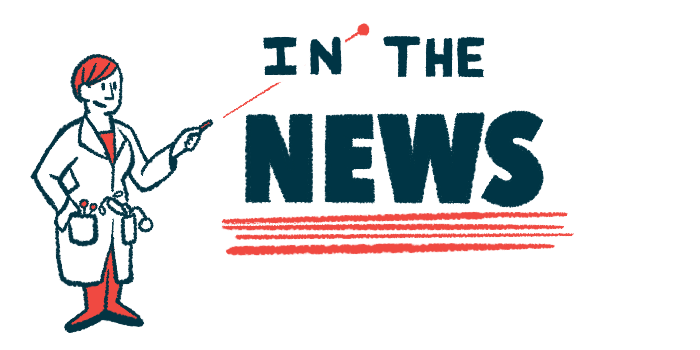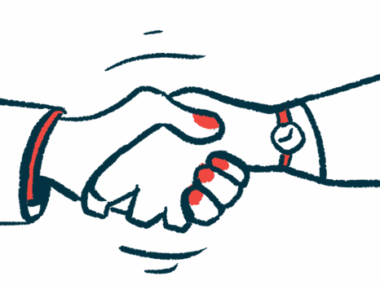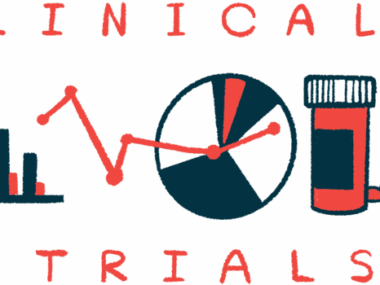Study will test zorevunersen on Dravet motor seizure frequency
EMPEROR will evaluate therapy's effects on children, teens over a year
Written by |

Stoke Therapeutics plans to launch a Phase 3 study this year to evaluate zorevunersen, a potential disease-modifying therapy for Dravet syndrome.
The trial, dubbed EMPEROR, which was announced after an agreement was reached with regulators in the U.S., European Union, and Japan, will test if a year of the therapy can reduce motor seizure frequency in about 150 children and adolescents, ages 2-17, with Dravet.
“Alignment around a global Phase 3 study design for zorevunersen puts us one step closer to our goal of delivering the first disease-modifying medicine for the treatment of Dravet syndrome,” Edward M. Kaye, MD, CEO of Stoke, said in a company press release. “We look forward to continuing to work together with a sense of purpose and urgency as we prepare to initiate the EMPEROR study by mid-year.”
In most cases of Dravet, mutations in one of the two copies of the SCN1A gene disrupt the production of a protein that forms a sodium channel called NaV1.1. Such mutations interfere with nerve cell signaling, giving rise to disease symptoms, including seizures that last five to 30 minutes or longer. While the second SCN1A gene copy remains healthy, it doesn’t produce enough NaV1.1 to preserve normal function.
Zorevunersen, previously called STK-001, is designed to boost the activity of the healthy SCN1A copy and produce more NaV1.1, thereby compensating for the disease-causing mutations. The therapy was recently granted breakthrough therapy designation by the U.S. Food and Drug Administration. The designation is meant to accelerate the development and regulatory review of therapies intended to treat serious or life-threatening conditions, and that demonstrate substantial improvement over available treatments based on early clinical data.
In the U.S., zorevunersen is being assessed in SWALLOWTAIL (NCT04740476), a long-term extension study of the now-complete Phase 1/2 MONARCH (NCT04442295) trial. In the U.K., testing is ongoing in LONGWING (ISRCTN12811235), a long-term extension of the now-complete ADMIRAL study (ISRCTN99651026).
The MONARCH and ADMIRAL studies enrolled 81 children and adolescents with Dravet, ages 2-18. Participants received single or multiple doses of up to 70 mg of zorevunersen plus their standard anti-seizure medications.
Reducing frequency of seizures
Data showed that six months after a single 70 mg zorevunersen there was a median 57% reduction in the frequency of seizures. Multiple dosing in the ADMIRAL study resulted in a median 85% reduction in seizure frequency at three months and 74% at six months after the last dose.
Of the 74 patients who completed MONARCH or ADMIRAL, 68 entered SWALLOWTAIL or LONGWING. One year of data reported last September showed zorevunersen continued to reduce the frequency of seizures while improving cognition and behavior.
In December, Stoke presented data from nine patients treated with two or three 70 mg doses of zorevunersen in the Phase 1/2 studies, followed by 45 mg in the extension. The patients had an 87% median drop in seizure frequency at month eight, which was four months after the second 45 mg dose. They also continued to see improvements in multiple measures of cognition and behavior with ongoing maintenance dosing through two years of treatment.
Moreover, an electroencephalogram analysis, a measure of the brain’s electrical activity, of 74 patients treated in clinical studies showed a reduction in the activity of slow waves, which are known to trigger seizures. These effects were most pronounced at the highest doses, with a sustained reduction in slow waves lasting for months after the last dose.
What will EMPEROR study assess?
Data from these studies supported the breakthrough therapy designation and the new EMPEROR Phase 3 trial, which could serve as a basis for regulatory approvals if data are positive.
“The level of attention and enthusiasm from clinicians, patient organizations, and regulatory authorities for this study speaks to the shared understanding that current treatments are inadequate,” Kaye said. “Their support also underscores a belief in the data from our clinical studies that demonstrated substantial and durable reductions in seizure frequency and improvements across multiple measures of cognition and behavior.”
EMPEROR expects to enroll about 150 children and adolescents, ages 2 to 17, with Dravet in the U.K., U.S., European Union, and Japan. It will test two loading doses of 70 mg and two maintenance doses of 45 mg over a year.
The trial’s primary goal is to reduce motor seizure frequency in those receiving zorevunersen over sham treatment. Secondary measures include safety, the therapy’s durability on seizure frequency, changes in behavior and cognition, a clinician’s global impression of change, and a caregiver’s global impression of change. Data are anticipated by the end of 2027, the company said.
Eligible participants who complete EMPEROR can join an open-label extension study.
“What families and we as clinicians now want are medicines that go beyond reducing seizures to address the neurodevelopmental issues associated with Dravet syndrome,” said Kelly Knupp, MD, a professor of pediatrics and neurology at the University of Colorado, Anshutz Medical Campus, and the Dravet program director and epilepsy program lead at Children’s Hospital Colorado. “This is the first Phase 3 study to assess the effects of a disease-modifying medicine on seizures as well as multiple aspects of cognition and behavior, which could lead us into a new era in the treatment of Dravet syndrome.”







